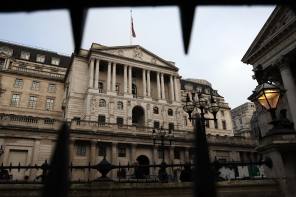

Inflation fell to 3.2 per cent in the year to March 2024, a slight drop from 3.4 per cent in February, the Office for National Statistics has revealed.
This is the lowest inflation has been in two and a half years and is significantly down from the peak of 11.1 per cent in October 2023.
This fall was fuelled by food prices with prices rising less than a year ago and was the biggest downward contributor to the March inflation rate.
While the largest upward contributor to the inflation rate was motor fuel, according to the ONS.
Becky O’Connor, director of public affairs at PensionBee, said these figures showed inflation was “edging to normality” but still remained in slow progress.
She said: “For savers and investors, any nudging down in inflation while interest rates and investment growth remain higher on the whole, means greater rewards over time.
“In the context of average wage rises, if this dynamic continues, this could mean people feel more able to build savings back up and boost overall household resilience once again.
“Pensioners have just received a boost to state pension income of 8.5 per cent as a result of April’s triple lock rise, so this should mean enough headroom for older people, especially those who are dependent on their state pension for retirement income, keep on top of their bills.”
Karen Barrett, chief executive of Unbiased added the UK was still not “out of the woods”
“After all, prices are still actively rising, just at a slightly slower rate than before , and there’s no guarantee they’ll start falling anytime soon.
“One of the most disappointing aspects of how long this has gone on for is not just the Bank of England’s repeated shortcomings, but also the government's lack of action to help people struggling with higher costs, especially soaring mortgage rates.
“Widespread policy changes aren’t necessarily the answer, but rather improved financial education whether at schools, in the workplace, or for those facing life-changing decisions.”
Core inflation
Additionally, core inflation, which excludes food, tobacco, energy and alcohol, cooled, only rose by 4.2 per cent in the 12 months to March 2024, down from 4.5 per cent in February 2024.
Although things seem to be heading in the right direction, Peter Stimson, head of product at MPowered believed the Bank of England would be in no rush to cut interest rates.
He said: “GDP growth may be anaemic but it’s likely to be just enough to convince the Bank to continue administering its bitter monetary policy medicine.
“That’s why the swaps market , which mortgage lenders use to set the interest rates they offer to borrowers, increasingly suggests that a cut in base rate could still be several months off.
“Many lenders had been hoping for a first base rate cut in June, with more to follow in the second half of the year. While rate cuts for 2024 are still likely, for now the waiting game looks set to continue a little longer.
“This is cold comfort to the estimated 1.6mn mortgage borrowers whose existing fixed rate deals are due to end this year. All of them are still likely to face a painful jump in their monthly repayments if they move onto a higher interest rate.”
Andrew Oxlade, investment director at Fidelity International said policymakers will still find it hard to justify cutting rates.
“The shift in rate expectations reflects this. In January, markets had expected six rate cuts in 2024 and that the first would have happened by now. Predictions today point to only two cuts, from 5.25 per cent to 4.75 per cent with the first not arriving until autumn,” he added.
alina.khan@ft.com



